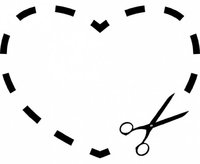Heart2Heart
Serving the cardiophile community since 2016.
You are not logged in.
Announcement
Pages: 1
#1 2017-11-10 22:05:42
- Diff
- Member

- From: Middle of nowhere, Kansas
- Joined: 2017-02-15
- Posts: 658
- Files: 139
- PM
Heart + Electricity
Was browsing along on reddit today and found an interesting comment thread:
The major way people die from electric shocks is if it goes through the heart. Your heart is a finely tuned machine that does not appreciate a sudden external signal saying contract all muscles. If you're lucky, your heart resumes beating with its normal pattern. If not, hope someone around knows CPR.
Incidentally, this is also a bugbear for medical shows - the device with the paddles and the shouting clear doesn't restart the heart, it stops the heart and is used when the rhythm has gone wrong (called fibrillation). The heart can then restart itself with the correct rhythm (hopefully).
i had no idea thats what they actually did...i thought defibs jumpstarted the heart if it stopped.
Paramedic here. Your heart pretty much runs off of an electrical circuit that makes the muscles contract when the impulse travels through it. Certain cardiac rhythms are similar to “short circuits” where the electricity finds “quicker” ways to loop through abnormal pathways and it causes problems. Like the other user stated, a defibrillation can only be done on certain ventricular rhythms to knock it back in order. Like in movies when people “flatline” and the first thing they do is defibrillate them, that’s inaccurate. There are other electrical methods of “shocking”like synchronized cardioversion, pacemakers, and such. People have pacemakers because their natural electrical pacemaker system has malfunctioned.
Had no idea - so if you flatline are you done for?
If you flatline, which is called asystole, your chances of survival are very poor.
The above poster is correct that using a defibrillator for asystole is something medical professionals should never do.
When someone's heart initially stops beating there is likely some sort of electrical activity, often disorganized. An AED should only shock 2 types of disorganized rhythms: V-fib or v-tach. (A manual defibrillator should also only shock these two rhythms although it's the operator who chooses when to shock)
In most cases, If left untreated, v-fib or v-tach will eventually go from a disorganized electrical rhythm to no electrical rhythm. This is asystole, or "flatline". This is more difficult to fix as it typically indicates the patient has not had a pulse for a longer period of time. Plus, if there is some electrical rhythm the chances of defibrillating thus creating an organized rhythm is much greater. Once there is no electrical rhythm it is unlikely that the heart will be "restarted"
Over the course of ones career, you may see a couple of people survive asystole and return to a normal walking talking person who gets discharged from the hospital. One example I can think of is a young healthy person who overdosed on narcotics.
There are other cardiac arrest rhythms, but this is a basic overview, not a cardiology class.
I thought the whole point of chest compressions was the avoid the person from actual dying? Just because the heart is asystole doesn’t mean they’re brain dead, they’re just trying their best to be
Chest compressions maintain oxygenation while you try and obtain some means to bitchslap the heart back into proper order, be it defib, drugs, pacing, what have you. The pacemaker system in a heart is distributed, functions independently, and basically its individual cells will keep firing off a signal no matter what until they're destroyed or disabled, so even a really badly messed up heart's cells will continue to contract, just not in an orderly way. Asystole means something incredibly bad has happened to the point where the entire environment of the body is so FUBAR that the pacing system can't fire a shot at all, like maybe electrolyte levels are so screwed up the cells can't form a potential, or there's absolutely no oxygen left and everything's so run down the patient's brain already turned to goo. There is no spark of life to fan into flame, that's it, stick a fork in the PT, they are DONE.
tl;dr asystole generally means there's nothing to work with, show's over. Not always, but usually.
idk how much of this is accurate since reddit isn't really a textbook or anything but it was interesting to read about anyway.
Last edited by Diff (2017-11-10 22:06:30)
Online
#2 2017-11-10 22:08:42
- Diff
- Member

- From: Middle of nowhere, Kansas
- Joined: 2017-02-15
- Posts: 658
- Files: 139
- PM
Re: Heart + Electricity
And here's another interesting bit about restarting transplant organs a little bit further down:
Do they not use a charge to restart the heart when performing a transplant?
Nope
For a transplant the donor heart is stopped with an ionic solution that removes the membrane potential (stopping the propagation of the contraction signal).
To restart the heart, the donor heart is simply flushed with blood and warmed. The heart's basic contraction is auto-regulated and will begin on its own. The little paddles you may have seen are defibrillators and are used when the heart isn't beating normally to reset it.
But it's the same concept as someone experiencing a cardiac episode: the heart should beat on its own or u ded.
Online
#3 2017-11-10 23:01:34
- shyboy1123
- Member

- Joined: 2017-04-21
- Posts: 72
- Files: 0
- PM
Re: Heart + Electricity
I saw the same thread on Reddit. Didn't get a chance to read it though.
Offline
Pages: 1
[ Generated in 0.021 seconds, 11 queries executed - Memory usage: 652.89 KiB (Peak: 682.96 KiB) ]